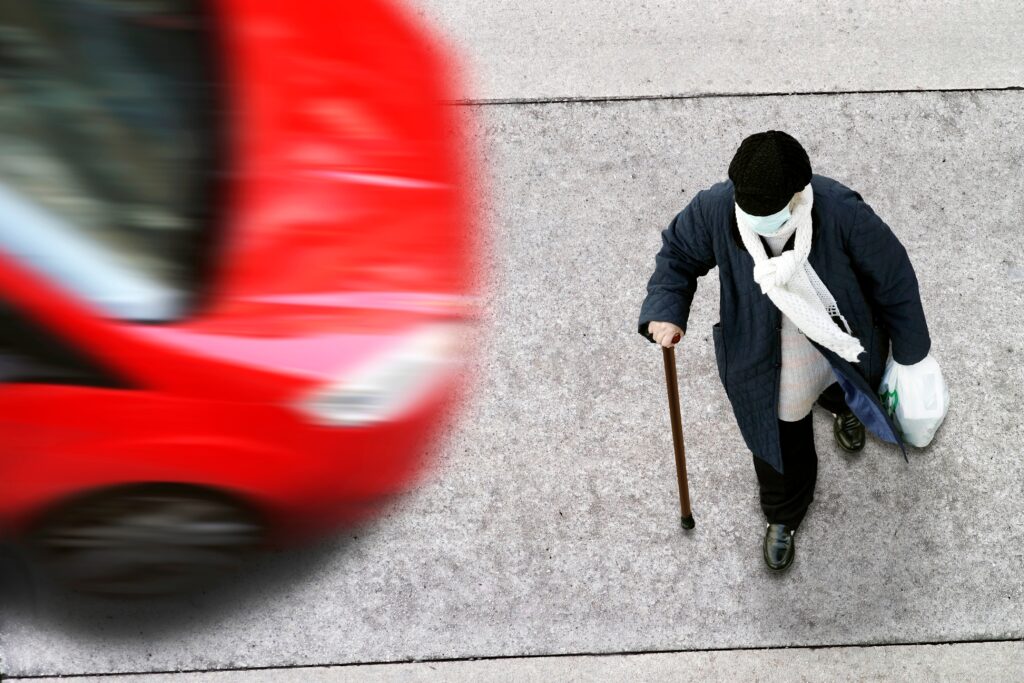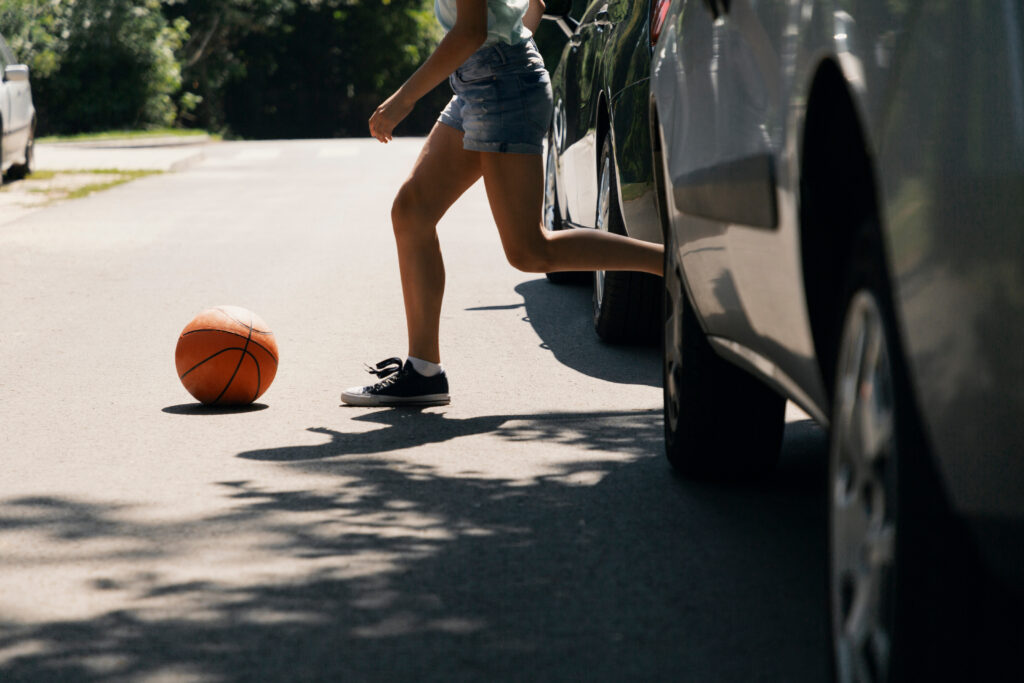Pedestrians are inherently some of the most vulnerable people on the streets or sidewalks. If they are hit by a vehicle, the injuries they suffer can be devastating and result in permanent disabilities. For this reason, various laws exist to protect pedestrians from vehicle traffic.
Many people wonder whether pedestrians always have the right of way, While the answer may seem simple, several scenarios and nuances exist.
If you have been involved in an accident while walking, the best way to find out if you have a claim is to speak with a San Diego pedestrian accident lawyer near you as soon as you can. An attorney can evaluate your case and protect your rights throughout the claims process.
Schedule A Free Case Evaluation Today!
The Basics of Pedestrian Right of Way

In most situations, pedestrians do have the right of way. This means that drivers are required to yield to pedestrians in certain circumstances, such as when they are crossing at marked crosswalks or intersections with traffic signals.
When a pedestrian is crossing at a designated crosswalk, drivers must come to a complete stop and allow them to cross safely. This applies not only to the lane in which the pedestrian is crossing but also to any adjacent lanes in the same direction. Failure to yield to pedestrians at crosswalks can result in hefty fines and points on a driver's license.
Drivers should be aware of pedestrians crossing at unmarked crosswalks or intersections without traffic signals. In these cases, drivers should still exercise caution and be ready to stop if a pedestrian attempts to cross. Even if a pedestrian is not using a designated crosswalk, drivers are responsible for avoiding collisions and ensuring safety.
Driver Responsibility in Various Scenarios
While pedestrians generally have the right of way, there are certain scenarios where drivers need to be particularly vigilant and take extra precautions. Let's explore some common situations and the responsibilities that come with them.
School Zones
School zones require heightened attention and caution from drivers. They are typically marked with signs, flashing lights, and reduced speed limits to indicate the presence of a school and the potential for children to cross the street. Drivers must be vigilant and alert when driving through school zones, as children may not always follow traffic rules or exercise the same level of caution as adults.
One of the most important things drivers can do in school zones is to adhere to the posted speed limits. Traffic engineers carefully determine these limits based on the area's specific needs, ensuring drivers have enough time to react and stop if a child suddenly enters the roadway. Exceeding the speed limit in a school zone puts children at risk and can result in hefty fines and legal consequences for the driver.
In addition to following the speed limit, drivers should be ready to stop at any moment when driving through a school zone. Children may dart out into the street unexpectedly, chasing after a ball or running to catch up with friends. Drivers may also be distracted by conversations or electronic devices, making them less aware of their surroundings. By being ready to stop at a moment's notice, drivers can help prevent tragic accidents from occurring.
When in school zones, drivers must watch for school buses. All drivers must stop if a bus stops and turns on its red lights. They must wait until the bus moves again. This rule helps kids get on and off the bus safely without being hit by cars.
Drivers should also be aware of when school zones are in effect. These times may vary depending on the school and the local laws, but they typically include the periods before and after school when children are most likely to be present. By being mindful of these times and adjusting their driving accordingly, drivers can help create a safer environment for children in school zones.
Residential Areas
Residential areas are another common location where pedestrians and vehicles frequently interact. These neighborhoods often have slower speed limits, narrower streets, and a higher presence of people walking, jogging, or playing outside.

One of the most important things to remember when driving through residential areas is the potential for pedestrians to suddenly appear on the roadway. Children may be playing in their yards or on the sidewalk, and they may not always look before running into the street to retrieve a ball or chase after a friend. Adults may also be out walking their dogs, exercising, or simply enjoying a stroll through the neighborhood.
To help prevent accidents in residential areas, drivers should lower their speed and remain ready to stop at any time. This means scanning the road ahead for potential hazards, such as parked cars obscuring a pedestrian or a child's toy that may have rolled into the street. Maintaining a slower speed gives drivers more time to react and avoid a collision if a pedestrian unexpectedly enters the roadway.
Another important factor to consider when driving in residential areas is the presence of parked vehicles. These vehicles can create blind spots and make it more difficult for drivers to see pedestrians who may be stepping out from between them. To help mitigate this risk, drivers should maintain ample space from parked vehicles and be ready to stop if they observe any movement or indication that a pedestrian may be present.
In addition to being aware of pedestrians, drivers in residential areas should also be mindful of other factors that may affect their ability to drive safely. This includes narrow streets, limited visibility due to trees or other landscaping, and children playing in the area. By being alert and adjusting their driving behavior accordingly, drivers can help create a safer environment for everyone in the neighborhood.
When drivers fail to take these precautions, victims can often recover compensation for their losses. The most effective way to get the compensation you deserve after a crash is to discuss your options with a pedestrian accident lawyer near you.
Parking Lots
Parking lots are a common area where pedestrians and vehicles interact, often near one another. These areas can be particularly dangerous for pedestrians, as drivers may be distracted by looking for parking spots, navigating through tight spaces, or rushing to their destination.
One of the most important things drivers can do to help prevent parking lot accidents is to maintain a slow speed. This allows them more time to react if a pedestrian suddenly appears in their path and reduces the severity of any potential collision. Drivers should also stay ready to stop at any moment, as pedestrians may walk to or from their vehicles and not always pay attention to their surroundings.
Another key factor to consider when driving in parking lots is the presence of blind spots. These can be created by parked vehicles, pillars, or other obstacles that obscure a driver's view. To help mitigate this risk, drivers should always check their surroundings carefully before entering or leaving a parking space. This includes looking for pedestrians walking behind their vehicles or crossing the parking lot in front of them.
In addition to being aware of pedestrians, drivers in parking lots should also be mindful of other vehicles. This includes leaving ample space for cars backing out of parking spaces and staying prepared to stop if another driver suddenly pulls out in front of them. By being alert and cautious, drivers can help reduce the risk of accidents in these high-traffic areas.
Low Visibility Conditions
Low visibility conditions, such as darkness, fog, or heavy rain, can significantly increase the risk of pedestrian accidents. In these situations, drivers may have difficulty seeing pedestrians walking along the side of the road or crossing the street, and pedestrians may also have trouble seeing oncoming vehicles.

One of the most important things drivers can do to improve pedestrian safety in low visibility conditions is to reduce speed. This gives them more time to react if a pedestrian suddenly appears in their path and reduces the severity of any potential collision. Drivers should also be prepared to stop at any moment, as pedestrians may be harder to see and may not always be using designated crosswalks or walking areas.
Another key factor when driving in low visibility conditions is using headlights. Drivers should always use their headlights when driving at night or in other low-visibility situations, as this helps improve their visibility and makes it easier for pedestrians to see their vehicles. In some cases, drivers may also need to use their high beams to help illuminate the road ahead, but they should be careful to avoid blinding oncoming drivers or pedestrians.
In addition to using their headlights, drivers should also be mindful of other factors that can affect pedestrian safety in low-visibility conditions. These include things like wet or slippery roads, which can make it harder for drivers to stop quickly if a pedestrian suddenly appears in their path. Drivers should also be aware of the potential for pedestrians to wear dark clothing, making it even harder for them to see in low-light conditions.
To help mitigate these risks, drivers should always err on the side of caution when driving in low visibility conditions. This involves reducing their speed, increasing their following distance, and staying ready to stop at any moment. If they don't, victims can retain a pedestrian accident attorney to hold them accountable.
Intersections
Intersections are a common location where pedestrians and vehicles interact, often with high stakes for pedestrian safety. These areas can be particularly dangerous for pedestrians, as drivers may be focused on making turns or navigating through traffic and may not always pay attention to people crossing the street.
One of the most important things drivers can do to help prevent accidents at intersections is to stay ready to stop for pedestrians, even if they have a green light. This means scanning the crosswalk and the surrounding area for people who may be waiting to cross or who may have already started crossing the street. Drivers should also stay prepared to yield to pedestrians crossing at unmarked crosswalks or areas where designated crossing is absent.
Another key factor to consider when driving through intersections is the potential for pedestrians to cross the street from multiple directions. This is particularly true at larger intersections or those with multiple lanes of traffic, where pedestrians may be crossing from different sides of the street or at different times. To help mitigate this risk, drivers should always check for pedestrians before turning, even if they have a green arrow or a clear path through the intersection.
In addition to being aware of pedestrians, drivers at intersections should also be mindful of other factors that can affect pedestrian safety. This includes sun glare, making it harder for drivers to see pedestrians crossing the street. Drivers should also be aware of the potential for pedestrians to be distracted by their phones or other devices, which can make them less aware of their surroundings and more likely to step into the path of an oncoming vehicle.
What to Do after Pedestrian Accident
If you have suffered injuries in a pedestrian accident, there are certain steps you should take to protect your health and legal rights. The most important of these include the following:
- Seek medical attention immediately, even if you feel fine, as some injuries may not be apparent right away.
- Gather evidence at the scene if possible, including photographs and contact information of any witnesses.
- Report the accident to the proper authorities and obtain a copy of the police report.
- Reach out to a pedestrian accident attorney with extensive experience handling similar cases. Yourl lawyer can investigate the circumstances of the accident thoroughly. determine liability and build a strong case, fight for fair compensation to cover medical expenses, lost wages, and other damages, and protect your rights throughout the legal process
Do not underestimate the complexity of pedestrian accident cases, and be aware that insurance companies may try to minimize their liability. Having a knowledgeable pedestrian accident attorney advocating for you can level the playing field.
Call a Pedestrian Accident Lawyer Near You Today
While pedestrians generally have the right of way, it is the responsibility of drivers to ensure their safety on the roads. By understanding the rules and exercising caution in various scenarios, drivers can significantly reduce the risk of pedestrian accidents.
Suppose you or someone you know has experienced a pedestrian accident. In that case, it's crucial to seek the guidance of an experienced pedestrian accident lawyer who can help protect your rights and recover compensation through the legal process. You can focus on healing and moving forward with the right support and representation.

